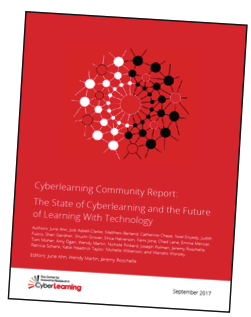
Download the Report (PDF)
Read the Executive Summary
Watch the STEM Showcase Video
Authors
June Ahn, Jodi Asbell-Clarke, Matthew Berland, Catherine Chase, Noel Enyedy, Judith Fusco, Shari Gardner, Shuchi Grover, Erica Halverson, Kemi Jona, H. Chad Lane, Wendy Martin, Emma Mercier, Tom Moher, Amy Ogan, Nichole Pinkard, Joseph Polman, Jeremy Roschelle, Patricia Schank, Katie Headrick Taylor, Michelle Wilkerson, and Marcelo Worsley.
Editors
Jeremy Roschelle, Wendy Martin, Juhn Ahn, Patricia Schank
The cyberlearning community in the United States brings computer scientists and learning scientists together to design and study innovative learning technologies. The Cyberlearning Community Report: The State of Cyberlearning and the Future of Learning With Technology highlights examples of the exciting work our community is engaged in as we integrate the latest innovations in learning science and computer science into new research designs and methods. Commitments to equity, innovation, multidisciplinarity, community, and designing for the future drive the work forward and make it distinctive. The work is driving the need for new learning sciences in areas such as identity and affect, and requires advances in methods such as multimodal analytics and context-sensitive computing. See five great reasons to read the report.
The report, organized by CIRCL and co-authored by 22 members of the U.S. cyberlearning community, describes six design themes emerging across multiple NSF-funded cyberlearning projects:
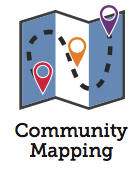 |
Community Mapping: Moving and Discovering across Contexts | |
 |
Expressive Construction: Enabling Learners to Represent Powerful Ideas | |
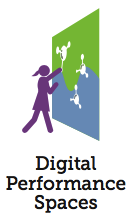 |
Classrooms as Digital Performance Spaces | |
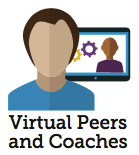 |
Virtual Peers and Coaches: Social and Cognitive Support for Learning | |
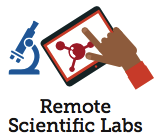 |
Remote Scientific Labs: Authenticity at Distance | |
 |
Enhancing Collaboration and Learning through Touch Screen Interface |
The design themes contrast with today’s common tablet or laptop-based school products by emphasizing context, mobility, physicality, agency, authenticity, and social learning. The report further identified how this work is driving the need for new learning sciences, for example in the areas of embodied cognition, identity, and affect.
The authors also highlight how cyberlearning researchers are advancing methods to study and improve these learning designs — in particular:
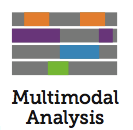 |
Multimodal Analysis | |
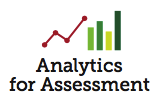 |
Learning Analytics for Assessment | |
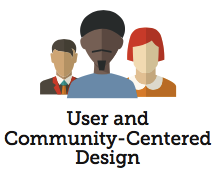 |
User- and Community-Centered Design Methods |
Suggested citation
Roschelle, J., Martin, W., Ahn, J. & Schank, P. (2017). Cyberlearning Community Report: The State of Cyberlearning and the Future of Learning With Technology. Menlo Park CA: SRI International.
To recognize the important contributions of each author, please consider using a chapter-specific citation when appropriate. These are:
- Taylor, K. H. & Pinkard, N. (2017). Community mapping: Moving and discovering across contexts. In J. Roschelle, W. Martin, J. Ahn, & P. Schank (Eds.), Cyberlearning Community Report: The State of Cyberlearning and the Future of Learning With Technology (pp. 12-16). Menlo Park CA: SRI International.
- Berland, M., Halverson, E., Polman, J. & Wilkerson, M. (2017). Expressive construction: Enabling learners to represent powerful ideas. In J. Roschelle, W. Martin, J. Ahn, & P. Schank (Eds.), Cyberlearning Community Report: The State of Cyberlearning and the Future of Learning With Technology (pp. 17-24). Menlo Park CA: SRI International.
- Moher, T. & Enyedy, N. (2017). Classrooms as digital performance spaces. In J. Roschelle, W. Martin, J. Ahn, & P. Schank (Eds.), Cyberlearning Community Report: The State of Cyberlearning and the Future of Learning With Technology (pp. 25-30). Menlo Park CA: SRI International.
- Fusco, J. Martin, W. Lane, H. C. & Chase, C. (2017). Virtual peers and coaches: Social and cognitive support for learning. In J. Roschelle, W. Martin, J. Ahn, & P. Schank (Eds.), Cyberlearning Community Report: The State of Cyberlearning and the Future of Learning With Technology (pp. 31-35). Menlo Park CA: SRI International.
- Roschelle, J., Jona, K., Schank, P., Grover, S. & Martin, W. (2017). Remote scientific labs: Authenticity at distance. In J. Roschelle, W. Martin, J. Ahn, & P. Schank (Eds.), Cyberlearning Community Report: The State of Cyberlearning and the Future of Learning With Technology (pp. 36-40). Menlo Park CA: SRI International.
- Lane, H. C. & Mercier, E. (2017). Enhancing collaboration and learning through touch screen interfaces. In J. Roschelle, W. Martin, J. Ahn, & P. Schank (Eds.), Cyberlearning Community Report: The State of Cyberlearning and the Future of Learning With Technology (pp. 41-44). Menlo Park CA: SRI International.
- Worsley, M. (2017). Multimodal analysis. In J. Roschelle, W. Martin, J. Ahn, & P. Schank (Eds.), Cyberlearning Community Report: The State of Cyberlearning and the Future of Learning With Technology (pp. 46-50). Menlo Park CA: SRI International.
- Asbell-Clark, J. & Fusco, J. (2017). Learning analytics for assessment. In J. Roschelle, W. Martin, J. Ahn, & P. Schank (Eds.), Cyberlearning Community Report: The State of Cyberlearning and the Future of Learning With Technology (pp. 51-56). Menlo Park CA: SRI International.
- Ogan, A. (2017). User- and community-centered design methods. In J. Roschelle, W. Martin, J. Ahn, & P. Schank (Eds.), Cyberlearning Community Report: The State of Cyberlearning and the Future of Learning With Technology (pp. 57-60). Menlo Park CA: SRI International.
- Gardner, S. (2017). The cyberlearning community. In J. Roschelle, W. Martin, J. Ahn, & P. Schank (Eds.), Cyberlearning Community Report: The State of Cyberlearning and the Future of Learning With Technology (pp. 62-66). Menlo Park CA: SRI International.
Acknowledgements
We thank Kate Borelli, Kevin Brown, Mimi Campbell, Cynthia D’Angelo, Sarah Hampton, Patricia Ruiz, Karen Snedeker, and the CIRCL Advisory board – Stephanie Teasley, Clark Chinn, Ken Koedinger, Daniel Edelson, Peter Brusilovsky, Guy-Alain Amoussou – for their careful reading, formatting help, and suggestions for improvement. This material is based in part upon work supported by the National Science Foundation under grants IIS-1233722, IIS-1441631, and IIS-1556486. Any opinions, findings, and conclusions or recommendations expressed in this material are those of the author(s) and do not necessarily reflect the views of the National Science Foundation.
